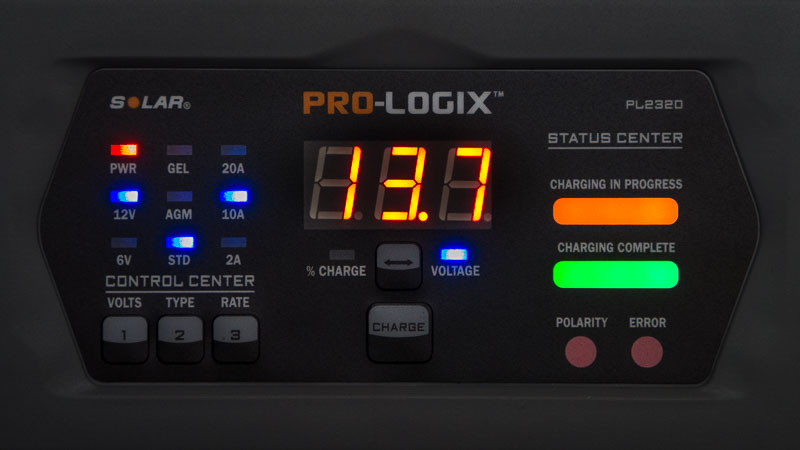Many AGMs will be tickled to death if deeply cycled and then slow charged.
Seek at least 20 amps per 100Ah of capacity on lesser$ AGMS and 30 or higher on better AGMS when drained to the 50% range./
While chargers for garages only really need to get the battery charged enough to start a vehicle, almost any charger can do this, but Ideal battery longevity is by getting the battery to full keeping it full, and cool.
With Automatic charging sources, well most, when they first flash the green light full charge indicator, are likley only 92 to 95% charged, and getting from 95% charged to 100% charged is likely to take another 2 hours, at 14.5ish volts, and 12+ hours at 13.6v, and 24+ hours at 13.2v, and that is on a still healthy battery. An abused/capacity compromised one will take much longer and perhaps higher voltages.
A hydrometer will prove that most automatic chargers will stop bulk/ absorption charging wel lbefore the battery is full. If left on long enough on float then it might, or might not ever attain maximum specific gravity.
An Ammeter is the next best tool for determining full charge, and is a requirememtn on an AGM. When the battery can only accept 0.5% of its capacity, 0.5 amp per 100Ah of capacity, or less, when held at ABSORPTION voltage( mid 14's) only then can it be considered fully charged.
This does not work at float voltage, and flooded/wet batteries are in the 1 to 3% of capacity range.
I regularly deeply cycle lead acid batteries. I got so sick of automatic chargers stopping absorption prematurely, I now use an Adjustable voltage powersupply. Also an Ammeter inline, and I hold 14.7v until amps taper to 0.45a or less on my Northstar 90AH AGM battery, and have over 700 deep cycles on it , many to well below 50% state of charge on it, and it will turn 4 years old Next month.
The time the battery needs to be held at absorption voltage changes, and can be anywhere from 3.5 to 12 hours. Temperature, initial charge rate, and how many cycles have accumulated since the last true full charge are the big variables which change the absorption time required.
Many automatic chargers simply use an egg timer algorithm basically giving 2 hours or so after it gets the battery to the mid 14 volt range. If the charger uses amperage as an absorption termination, which very few do, then it should also know the capacity of the battery it is trying to recharge. Such chargers are usually in the 500+ dollar range
But good enough for the average joe and Ideal for the specific battery being charged, are pretty far apart.
No Automatic charger will have an ideal algorithm for any specific battery. They are guessing on an acceptable compromise and decide to cover the weaknesses with extra special marketing, and depend on ignorance of the consumer.
As far a low and slow recharging always being best, well, even when I was deep cycling flooded marine/deepcycle group27/31 batteries, they were getting amperages into the 0.45C range from my alternator, and I was still getting 500 deep cycles from them. The low and slow trickle charge mentality annoys me. Batteries can take much higher amperage than most suppose, and when a person jumpstarts a vehicle the alternator will likely be feeding the battery 50+ amps for close to an hour, and the battery will still be very far from fully charged and should be put on a charging source until full, or close to it, as living in the 50% charged range will kill a battery quickly.
I've no recommendations on any specific charger product, only a recommendation to be highly suspicious of that green 'full charge' indicator. It lies. An OTC4619 will prove it, especially on an abused or deeply discharged battery.
I would recommend those using an automatic charging source, after it declares all is well and fully charged, to unhook charger from battery, unplug it from wall, and load the battery with an old headlight or two, 7+ amps until battery voltage falls to the 12.6v or less range, then restart charger. Lather rinse repeat. Each repeat should get the battery closer to a true full, but perhaps not. This is more important on older batteries or ones that have spent a lot of time well below 80% charged.





